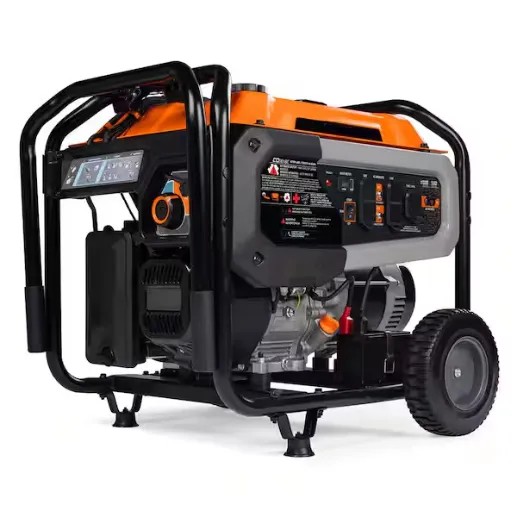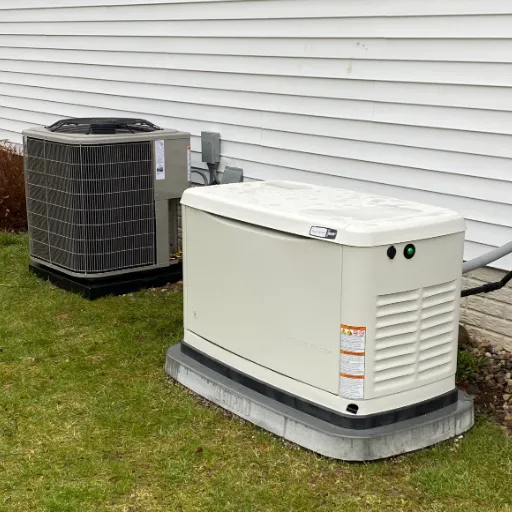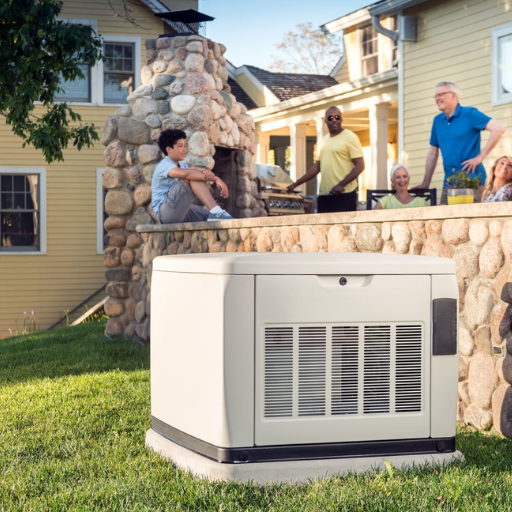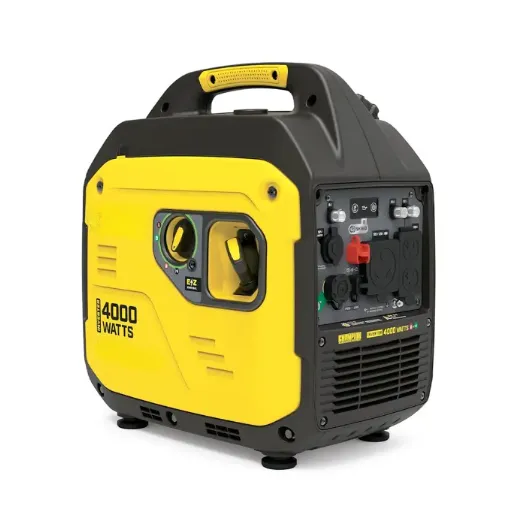One of the distinct situations in which it is essential to have a standby generator is during a power failure. You can use them to protect your home from an energy blackout or to accommodate your commercial operations during any power outages that may occur. Booking for the purchase and installation is impossible without understanding the cost involved. This article will also attempt to highlight some of the factors that influence generator prices, including, but not limited to, the required type of unit, installation costs, and maintenance. So, before you commit to this, you will not have any doubt about what to expect, and that will assist you in guiding these expenses either at your place or at your business, therefore relieving you of the fear of these costs. Join us as we take you into the world of generator costs and expenses.
Introduction to Backup Generators
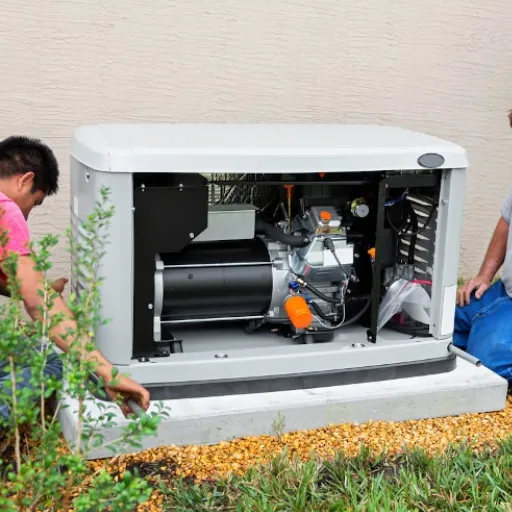
Generators revive power during power outages, enabling essential applications and equipment. Backup generators can be helpful in both domestic and commercial properties located in areas that have frequent power breakdowns or adverse weather conditions. The reason why homes and businesses use generators is that some standby generators have main features that include: a standby to protect against interruptions of business activities, securing necessary equipment, and preventing unaffordable downtime. When the installation question arises, it is essential to evaluate the situation, analyze the required power level, available funds, and the availability of the appropriate unit.
Importance of Backup Power During Outages
In either residential or commercial environments, backup power during a power outage is indispensable to ensure safety, Luxuries, and loss in production. Power outage is most often a result of extreme environmental conditions, equipment failure, or grid overload. Specific estimates showed that it is not unusual for an average American family to experience a power outage about once a year, with blackout periods now more frequent in some areas, compared to a few years ago, when they were only recorded at record highs in America. Emergency generators shall protect specific equipment, including medical and cooling devices, as well as computers, phone systems, etc., during power outages. Some businesses will be at risk due to the loss of revenue if systems die or goods get spoiled. Hence, having a late alternative power source can keep work and the response of your staff stable during power supply outage episodes and ensure that programming as well as data are ht not put at risk and you do not lose sleep worrying about systems operating at a particular time.
Overview of Generator Options
When considering the number of backup power sources, consider the types of generators available that can specifically support different usage scenarios. The key ones that one needs to consider are portable generators, as well as emergency standby or stationary units with automatic power supply connections. Portable generators are more versatile and can be carried to areas where electric power is not readily available, implying that it will require a smaller unit. They usually do not need electricity and are suitable for general needs as well as most emergency ones, and also include potential charging issues. They are usually flavoured with gasoline or diesel and tend to be more affordable as they do not have automatic changeover or fuel loading facilities. The other natural gas version is the standby automatic generators powered by liquefied natural gas or LP gas, which is quite suitable for the interference-free operation of both domestic and commercial installations. In addition to these options, inverter generators stand out, as they are ideal for situations where low noise and stable power are necessary, especially when handling delicate equipment.
Why Consider Installing a Generator?
People may find it necessary to install a generator for an improved daily living experience, which ensures a stable macroeconomic environment during emergencies and sudden electricity outages. Due to the current trend of frequent blackouts caused by natural disasters that last for days, the importance of having a strong and reliable electrical backup system has increased over the years. The problem with power supply outages is that they affect indispensable services such as heating, ventilation, air conditioning, refrigeration, and, more importantly, communications. They are also often used in the context of business so that utility losses are not incurred and the firm’s high-performance systems and information security are not compromised. A certain product, such as the inverter power generators, is aimed primarily at protecting consumer electronic equipment from erratic voltage disturbances when the larger grid is offline. Lastly, knowing that you have a generator in the background would often coax you to buy the lost item again, which some find out of emotional value, and in the case of safety, to avoid wearing anything that exposes them to discomfort.
Types of Generators and Their Impact on Cost
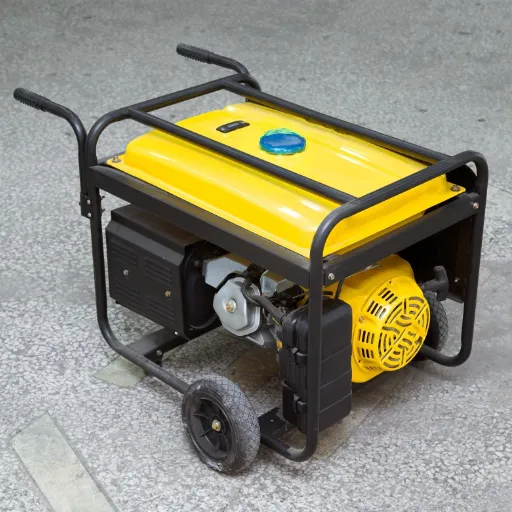
Portable Generators
If on matters of portable generators, they are probably the cheapest option available. They are suitable for short-term needs and minimal loads, such as running some appliances during power cuts, but are operated manually. Nevertheless, they must be refueled manually on a regular basis.
Standby Generators
Permanent standing generators are more expensive but offer advantages in their automatic operation, which can also be installed permanently. It is suitable for long-term use, and the generators can supply energy to the whole house or a commercial building in the event of outages, which increases availability and delivers timely service.
Solar Generators
Solar generators have the advantage of being more eco-friendly and using energy from the sun. Initially, their costs may be prohibitive, mainly due to the cost of panels and batteries; however, running costs can be easily contained, and for most users, the solar option proves to be beneficial.
Inverter Generators
Even though these small generators are designed to ensure operational certainty and protect equipment against voltage fluctuations, they all suit perfectly. Usually, they are more expensive compared to the ‘normal portable’ models, but they are more efficient in power generation, and the noise level is virtually low.
Standby Generators vs. Portable Generators
| Key Points | Standby Generators | Portable Generators |
|---|---|---|
| Power Output | High, suitable for whole-house power | Lower, best for small appliances |
| Installation | Professionally installed and permanently fixed | No installation required, portable use |
| Fuel Source | Natural gas, propane, or diesel | Gasoline, propane, or diesel |
| Startup Process | Automatic start during power outages | Manual start or push-button |
| Portability | Fixed in one location | Easily movable or transportable |
| Noise Levels | Quieter due to enclosed design | Louder due to open frame |
| Cost | Higher upfront and maintenance costs | Lower upfront cost, economical choice |
| Maintenance | Requires regular maintenance schedule | Minimal, DIY-friendly maintenance |
| Usage Duration | Operates for long hours | Limited runtime depending on fuel capacity |
| Best For | Long-term or frequent power needs | Short-term or occasional power needs |
Fuel Types and Their Cost Implications
Gasoline
Gasoline is readily available and popular due to this; it is a convenient choice for use in small-scale power generators. However, the cost of gasoline usually fluctuates a lot due to the unstable political scene in the Middle East region, and storing gas or diesel for longer periods can cause them to deteriorate in unfavorable weather.
Diesel
Diesel is the best engine power source for large generators due to its dependability and commendable reliability. Diesel fuel is usually more expensive than gasoline fuel, but it is also more energy efficient, which makes it possible to offset the running costs difference over the lifecycle. However, the prices of LPG generators are somewhat high due to the increased size of the fuel tank, which is typical of LPG generators.
Propane
Propane is a cleaner and more durable fuel than gasoline or other liquid petroleum fuels. It can be stored for a long time without disintegrating if the moisture content remains low, making it a frequently acquired and set-up standby source of power generation. Propane generators typically require a larger fuel tank, but on the positive note, the emissions produced are fewer, thereby conserving the environment.
Natural Gas
Natural Gas is both cost-effective and a reliable fuel to be used by any generator that is fed by a utility service and equipped with such a power source. It may seem founded, however, that installation-borne initial investments are likely to be greater; however, the enduring and geographical assured availability, not to mention the costs and incomes earned in urban centers, make it the most favorable.
Power Output: Choosing the Right Size Generator
Measurement and assessment involve selecting the optimal generator size to meet the required power demand. To determine the optimal size, first, add up the wattage of all households and electrical items that will be plugged in simultaneously. For instance, items such as cooking appliances, refrigerators, heaters, and air conditioners require more wattage. A small, portable generator designed for basic operation can, in some cases, provide power in the range of 2000 to 5000 watts. However, for larger housing units or commercial buildings, a full-facilities generator with a capacity of at least 10,000 watts may be required by the consumer. Additionally, peak power consumption should be considered, as some appliances, such as refrigerators or pumps, exhibit a short period of high loading during start-up. In this way, buying a generator with a slightly higher capacity than the calculated capacity is advantageous, as it preserves the electrical system from exhaustion. You may also wish to consider the expertise of professionals who install generators. If you use electrical appliances, consider renting a generator or conducting practical experiments to accurately measure power sizing when you notice any trouble with the electricity supply.
Key Installation Factors
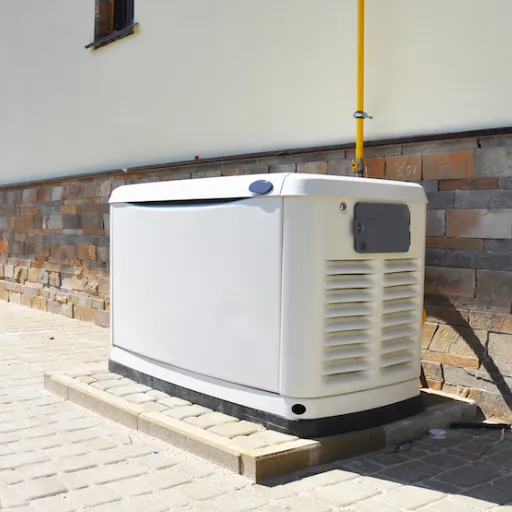
One of the most important measures to take when installing a generator is to position it correctly. The generator should be set up outside in a well-ventilated location, at least 20 feet away from openings such as windows, doors, and ventilation systems, to prevent the buildup of carbon monoxide. It is also necessary to secure the strength on a flat surface in order to avoid movement or damage while working. Additionally, use extension cords that are appropriately rated for outdoor use and ensure they are sufficient to handle the required power load. For permanent installation, hire a trained electrician to wire the generator to your electrical panel using a transfer switch, ensuring compliance with all local building codes and restrictions.
Site Preparation and Location Considerations
It is essential to the safety and effectiveness of your generator that good grounds are laid. The polluted air should first and foremost be filtered away from the building you are using outdoors. Be sure to keep the generator so that it is at least 20 feet from all doors, other windows, and air vents in the building, since it will introduce air with the compounds from the exhaust. The construction should have its surface made tough, even, and impervious, such as, for instance, a hard concrete slab, a layer of gravel, or rammed earth, to eventually contribute to the reduction of both noise and vibration at some existing components that can fall out during the use of some facilities. Naturally, when installing, take into consideration also the sound that will be produced by the generator and how it may affect those around or within the household. The installation of noise-absorbing barriers prevents interruptions caused by noise and, at the same time, facilitates ventilation of the system. When commissioning a high location must be selected and that particular environment must also be ensured instead to be free of dangers such as low hanging tree branches, combustible materials or water pools. If your location is swampy or prone to flooding, it would be wise to install the generator above possible water levels.
Electrical Work Requirements for Installation
The role of high-quality, renowned local construction should not be underestimated when setting up a generator. It is necessary to verify the fulfillment of all local policy requirements for further work related to the column before commencing any electrical installation. It is crucial to bring in a qualified practitioner who holds a license in electrical systems to handle duties such as connecting a generator to a house’s electrical distribution board and installing a changeover switch. The switch in place facilitates the transition of power in the event of failure of the main source, eliminating any potential danger that may be posed to the system or working staff by allowing the previously switched-off circuits or devices to be re-energized.
One needs to bear in mind that electrical connections serve the source of electricity and that the means do not supply and consume the energy at the same time. It is essential to know the power ratings of key appliances and wiring circuits to prevent compensating for the power-generated deficit, thereby avoiding the occurrence of short circuits. Good wiring should be used, along with all components having the relevant certifications, to ensure both safety and efficiency. That is to say, when it comes to the installation of a complete conditioning and heating unit or any other unit that contains the generator, the automatic standby should ensure power comes on immediately due to the setup, which will operate such activities. Ultimately, you should conduct a comprehensive inspection of the system to ensure all components are functioning properly. It is what provides much-needed peace in case of an emergency.
Transfer Switch Types and Their Importance
Transfer switches are a type of changeover switch that helps ensure a seamless transition between the primary power source and the standby generator during power outages. These can be divided into two categories: the manual and the automatic changeover switches.
Manual Transfer Switches
Manual Transfer Switches: The primary power input must be disconnected manually, and an alternative input must be manually connected. These are usually less expensive and are used for modest installations where downtime is not a critical issue. However, it should be noted that they require the presence of a person at the site who can be available at all times. In contrast, in certain situations, the requirement for a quick restoration of power is compulsory.
Automatic Transfer Switches (ATS)
Automatic Transfer Switches (ATS), on the other hand, do not require any manual operational control. In the event of a power shortage, ATS can detect the lack of the primary power source and automatically switch to an alternative backup generator without any delay. It is used in situations requiring a sustained power supply, such as in services, healthcare provision, prior installation, and operational applications. It is effectively used where there is a need for continuation of services due to minimal interruptions because it is automatic.
Additional Expenses to Consider

On a related note, whereas a generator and transfer switch are some of the components that are typically purchased together, the cost of purchase is usually taken into account; however, there is a need to examine other costs that may also apply. Also, add up the cost of the following:
- Installation Costs: In various situations, it would be important to hire an expert to install the generator as well as the transfer switch, since it may be a complicated system which may involve some final wiring and even the compliance of the system with specific requirements, regardless of whether this already exists or has not already been met.
- Fuel Supply: Depending on the rated capacities and/or the application of the diesel generator, it may be necessary to include the cost of a fuel storage tank that must be filled with an acceptable grade of diesel.
- Maintenance and Repairs: Scheduled events include cleaning or adjustments required for the genset and control switch to perform optimally, as well as changing the oil, filters, and performing a refractory wear inspection (for worn-down components).
- Permits and Inspections: Certain locations require a permit or inspection during the installation of a generator and transfer switches, which ultimately adds to the total cost incurred.
- Upgrades or Modifications: It is also likely that there will be a need to upgrade components of some obsolete electrical systems to the new smoothing equipment, thereby increasing overall costs.
Reviewing such funds in advance helps avoid unexpected hitches and guarantees comfort in the long-term phases of the project’s completion.
Maintenance Plans and Their Costs
If you want it to last, investing in a generator maintenance program is a must. Regular periodic maintenance is complete with an oil service, a filter exchange, a battery review, and a load test. It means that maintenance will cost significantly more than that, and it may vary from $150 to $300 per month, which is made unnecessary, and this does not include insurance value. Annually, the fee for large-sized standby generators could amount to $500 or higher due to the interconnectedness of the components and higher patron availability for service. There are also providers offering different classes of service, such as only covering the basic inspection, and others providing a more in-depth option that may include emergency response after an outage or discounts on service costs. Finally, it is worth allowing the inspection and replacement cost of functional elements – batteries, (or) spark plugs – into the estimate of maintenance cost, which may generally be priced from $50 to $200 per such event.
Fuel Storage Solutions and Expenses
Storing fuel properly is an integral part of ensuring a generator operates securely and efficiently. High-grade solutions for fuel storage, whether in the form of double-walled tanks or those conforming to fuel safety standards, offer numerous options for reducing the risk of leaks and contamination. The cost of these storage facilities can also be very high; for example, simple fuel containers cost between $20 and $50, while larger, longer-lifting, and stronger storage tanks cost between $500 and $3,000, depending on the capacity and material. Moreover, it is necessary to place the fuel in a location with adequate aeration and without any fire risks. Additionally, the use of fuel treatment products is essential. Although you may have to part with between $10 and $20 per container, it allows fuel to be stored for longer periods, ensuring it is used and all emission requirements are met. By practicing these precautions, a reliable and consistent electricity supply is ensured, which in turn enhances safety and minimizes operational costs in the long term.
Warranty Extensions and Their Impact on Overall Cost
Warranty extensions are services provided that offer repair and maintenance claims on products or services past typical warranty periods. Hence, these services may, however, have an initial payback but will assist in reducing the occurrence of expenses in the foreseeable future, especially for high-value gadgets/machines like those belonging to the company. A simple example is that one can gain a significant reduction in these costs in the case of big-ticket purchases like home appliances, where the estimated cost of the repairs compared to the cost of the product itself would make the warranty cost a tiny fraction of the repair cost. According to the evidence, it has been observed that without purchasing extended warranties, repair costs for major appliances or automobiles remain higher than the price of the warranty. Consequently, such protection is of great importance. Generally, there are several benefits often associated with purchasing an extended warranty, such as being offered a complimentary service. It is also necessary to refer to coverage limits and exceptions in order to perform a correct analysis of the policies and find out whether the financial prizes of such a promotion are worth these restrictions.
Potential Savings and Long-term Value of Backup Generators
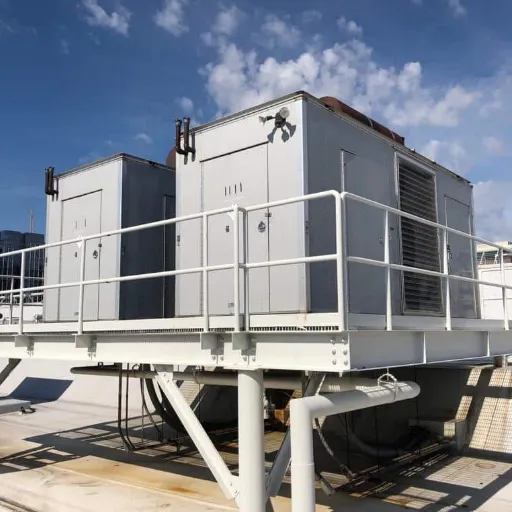
Backup generators can provide significantly more value than is typically perceived during power outages. Supplying the power requirements of operations, such as heating and cooling, while also addressing medical needs, is a crucial issue, apart from, for example, compensation for food not stored or accommodation in such precarious situations. Additionally, it will be the best decision if you are a businessperson who can positively impact profit generation and/or efficiency, leading to the installation of backup generator systems, which prevent any downtime. However, the standing expense can be prohibitive; the savings, including safety, are usually worth the money. In addition, with proper care and use, it is possible to actually extend the operational life of the generator and derive value from the machine over a long period.
Preventing Food Spoilage and Other Losses
Having a power generator to backup is one of the essential factors in case the system is not in good condition. Additionally, it’s recommended to store perishable items, such as meat, dairy, and fresh fruits and vegetables, in a refrigeration system, as they will begin to spoil within three to four hours if not kept cold. This protects people’s lives and property, as well as prevents the unavailability and leakage of perishable products, which can spoil huge sums of perishable goods. There are organized people who cannot afford the cost of a refrigerator in their home. They must embrace the use of a backionaries and upright freezers. Besides food, the generator also ensures that other perishable items, including drugs or biological substances, are kept in proper condition for future use. For businesses, it will diminish rather than eliminate their potential economic losses. Most importantly, due to the way it helps their customers cope with the disaster, it maintains the trust and purchasing power of such customers.
Protecting Electronics from Power Surges
It has been observed that power surges are inherent to electrical devices and machines because of a rapid increase in discharge to these devices, especially electrical ones. Abrupt changes in the transmitted voltage usually cause power surges when used with electrical equipment such as compressors and conveyors. Because providing security in terms of electrical equipment use is extremely important, the two banks of changes. Usually in residential and industrial areas are places where power surges typically occur in Atlanta, to solve the above problems, people install protection from electrical surges called power surge protectors where they can be used daily.
Increasing Home Value with a Backup Generator
If one installs a generator for power outages, the house becomes more valuable due to its advantages of peace of mind and protection. Market research indicates that such items are essential for homes, as customers demand them as part of their living spaces. That is because this technology helps manage problems associated with, for example, storms and other weather hazards. In this regard, generators ensure power to all systems, such as HVAC and refrigeration, while also enhancing safety and making emergency cases more manageable. Meanwhile, statistical studies show that backup generators, in most cases, prove to be profitable investments, with the installation cost of not less than 50% being completely returned to the buyer. In particular, for homeowners who have their Marietta house for sale and are located in unfavorable climatic regions, a Marietta home sale generator is a necessity and does involve a visual aspect that contributes to the sale process. They are capable of providing power on demand when in operation, while complementing the surrounding environment and reducing noise pollution due to their superior technology.
Reference Sources
-
COST BENEFIT ANALYSIS OF A DG INTEGRATED SYSTEM
- Key Findings: This study compares energy charges before and after the installation of solar photovoltaic (SPV) systems integrated with diesel generators. It highlights the cost savings and efficiency improvements achieved through this hybrid system.
-
Economic and Resiliency Impact of PV and Storage on Backup Systems
- Key Findings: The research evaluates the economic and resiliency benefits of integrating photovoltaic (PV) systems and energy storage with backup generators. It identifies additional hardware costs and the potential for long-term savings.
Frequently Asked Questions (FAQs)
Q: How do I determine the size generator I need for my home?
A: The perfect generator to use in the house is, without doubt, one that does not fail to supply the needed amount of power when every other power fails. In the case of a whole-house generator, these would include appliances such as air conditioners, refrigerators, and heating equipment. To determine the size required, gather all the items that will be powered, then add up the wattage of each, and finally determine the size of the generator. It is also a good idea to consider your m-assets, as you may need them at a later date. Installing a generator that can handle more loads will reduce the effects and costs involved, as there will be no need for unnecessary adjustments. Putting in a more powerful generator will be costly rather than correctly investing in a second generator. Executors will be able to assess the generator’s functional capacity.
Q: What is the cost of a backup generator installed?
A: There is a wide variety of costs that come with having a backup generator. Installing one may set you back anywhere from $3000 to $10,000, depending on the size and type of the generator. A solution that will scare any wallet is buying a generator that will cover the whole house’s needs in case of an emergency. The trends may provide room for further expansion; however, currently, most people in most states are covered by power backup, which is known as smart energy. Additional works could include connecting piping systems, conducting engine repairs, and generator maintenance, among others. It is therefore advised that individuals factor in the aspect of maintenance when calculating the cost of owning one.
Q: What are the benefits of installing a whole-house generator?
A: The significance of having a generator is a wide array of benefits, and this is particularly important when there are more challenges during an outage. Among the significant advantages is the relevance of having a uniform increased amount of power in your home to make it fully operational. I.e., essential home equipment like aircons and fridges will not stop either. Besides, there are high chances that the house will sell out completely at times, and many potential buyers admire such installations. Whole-house generators – residential generators – are designed to operate automatically, making it much easier for this equipment to function as it begins working on its own without any active intervention from homeowners, which also addresses concerns about storms or blackouts.
Q: How can I connect my generator to my home’s electrical system?
A: A licensed electrician or electrical contractor is needed to install the generator to the house properly. An automatic transfer switch can typically be used to connect the portable generator to the home electrical system, allowing for the seamless transfer of power between the primary electricity source and the backup generator. In this case, backfeeding of energy to the grid system, which can endanger the utility workers, is prevented. The installation material will differ depending on the generator specifications and the house’s electrical system. You should hire someone who knows how generators work very well so that they can determine the best connections during the installation of the generator in and around your location.



